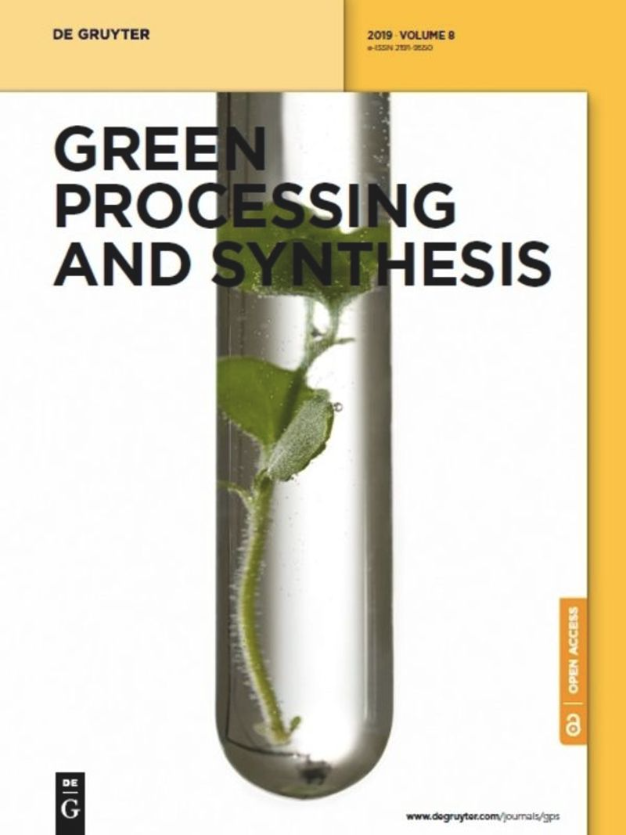Micro-impact-induced mechano-chemical synthesis of organic precursors from FeC/FeN and carbonates/nitrates in water and its extension to nucleobases
IF 3
4区 工程技术
Q2 CHEMISTRY, MULTIDISCIPLINARY
引用次数: 0
Abstract
Abstract Much effort was taken to elucidate how organic precursors appeared in early Earth, and attention was paid to two impact experiments: hypervelocity impacts by a propellant gun which simulated meteorite collides to Earth forming fatty acids and amino acids from inorganics, and micro-impacts by a planetary ball-mill which formed ammonium and acetic acid from inorganics. Our extended study on micro-impacts showed the formation of carboxylic acids, amines, and amino acids from Fe3C/Fe4N, carbon, and carbonates/nitrates by milling up to 30 h at 40 G. Fe(CO2)2·2H2O accelerated the formation a step further. Cu addition caused superior capability to form amines and amino acids. Two reaction fields were disclosed. In the impact field, the hydration of ferrous materials generated hydrogen which hydrogenated inorganic carbons to organics and ferrous transient materials and, in the maturing field, hydrogenated materials were then transformed into complex organics. Iron and CO2 were presumably the key components in the Hadean Ocean. Discussions on the mechano-chemical reaction were extended to serpentinization coupled with diastrophism of oceanic crusts and further led to a depiction that organic precursors were formed by micro-impacts and frictions of rocks and sands (like milling-balls) due to tremors in crusts. It provides a new path on how organic precursors were formed on the aqua-planet Earth.微冲击诱导FeC/FeN和碳酸盐/硝酸盐有机前驱体的机械化学合成及其向核碱基的延伸
摘要:为了阐明地球早期有机前体的形成过程,本文着重进行了两个撞击实验:模拟陨石撞击地球产生无机物形成脂肪酸和氨基酸的推进剂枪的超高速撞击实验,以及模拟无机物形成铵和乙酸的行星球磨机的微撞击实验。我们对微冲击的扩展研究表明,在40 G下研磨30小时后,由Fe3C/Fe4N、碳和碳酸盐/硝酸盐形成羧酸、胺和氨基酸。Fe(CO2)2·2H2O进一步加速了形成。Cu的加入使其形成胺和氨基酸的能力更强。公开了两个反应场。在冲击场中,含铁材料水化产生氢,将无机碳氢化为有机物和含铁瞬态材料;在成熟场中,氢化后的材料转化为复杂有机物。铁和二氧化碳可能是冥古宙海洋的关键成分。对机械化学反应的讨论扩展到蛇纹石化和海洋地壳的地壳变形作用,并进一步提出了有机前体是由地壳震动引起的岩石和沙子的微冲击和摩擦(如磨球)形成的。它为研究有机前体如何在水行星地球上形成提供了一条新的途径。
本文章由计算机程序翻译,如有差异,请以英文原文为准。
求助全文
约1分钟内获得全文
求助全文
来源期刊

Green Processing and Synthesis
CHEMISTRY, MULTIDISCIPLINARY-ENGINEERING, CHEMICAL
CiteScore
6.70
自引率
9.30%
发文量
78
审稿时长
7 weeks
期刊介绍:
Green Processing and Synthesis is a bimonthly, peer-reviewed journal that provides up-to-date research both on fundamental as well as applied aspects of innovative green process development and chemical synthesis, giving an appropriate share to industrial views. The contributions are cutting edge, high-impact, authoritative, and provide both pros and cons of potential technologies. Green Processing and Synthesis provides a platform for scientists and engineers, especially chemists and chemical engineers, but is also open for interdisciplinary research from other areas such as physics, materials science, or catalysis.
 求助内容:
求助内容: 应助结果提醒方式:
应助结果提醒方式:


